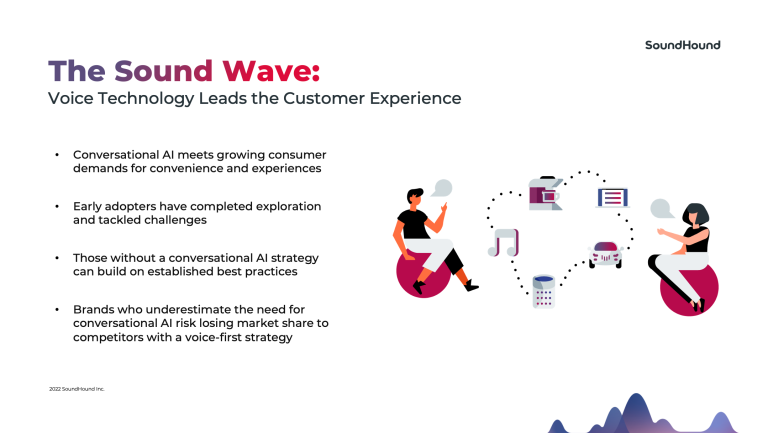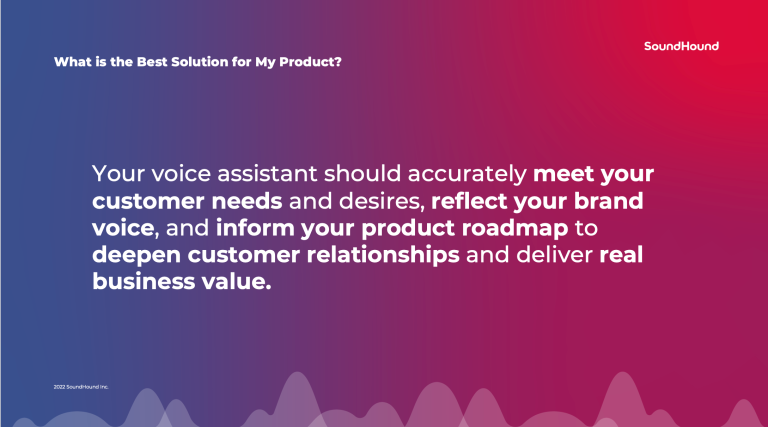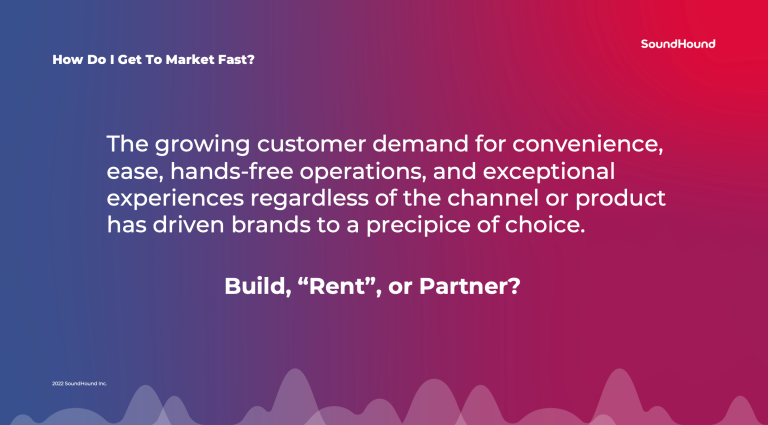Branded voice experiences lead to greater ROI
As voice assistants continue to rise in both demand and popularity, a sound wave is sweeping through both consumer expectations and brand needs. Companies are becoming increasingly aware of how conversational AI gives users the convenience, ease, and speed they crave, but many are still debating the best avenue to achieve their goal—to build, “rent”, or partner.
Brand-owned voice assistants provide many key advantages, including:
- Owning user experiences
- Retaining customer relationships
- Having visibility into critical data and analytics
- Generating real value
The insights gained from aggregated data collected through conversational intelligence provides brands with critical information to better understand their customers’ needs, improve the voice experience, and inform their product and customer service roadmaps.
In addition, when brands own their technology and control their data, brand confidence can be further developed when privacy policies are transparently communicated and users can be assured that data is anonymized and not shared with other companies or used for marketing purposes.
Brand-owned voice assistants give companies the opportunity to extend their brand across channels and the flexibility to customize the voice experience to meet their customers’ needs and desires. Only when brands own their voice experience can they open the door to monetization opportunities that deliver real revenue opportunities.
Voice assistants aren’t a one-and-done project, but an ever-evolving strategy that should be continuously iterated and improved. Even before thinking about what the voice assistant will sound like, organizations must consider why they are voice-enabling their product, app, or service. A well-constructed voice AI strategy and buy-in from strategic stakeholders are critical to how they’ll design and develop their voice experience.
Here are some good questions to consider when developing a strategy:
- What are my customers’ needs and desires?
- How should my voice assistant reflect my brand?
- How can my voice assistant deepen customer relationships?
- How can I deliver real business value?
A great deal of user testing should be done at every stage of developing your voice assistant to best learn how to meet your customer needs and to discover what they’re expecting from your voice assistant. Your strategy should both look at the ROI of a voice assistant and the relationship with a customer. Only through a brand-owned voice assistant will you have the access to data and analytics to make these informed decisions.
Deploying a brand-owned voice assistant is either a build-it-yourself or a build-it-with-a-partner strategy. In making this decision, companies must determine the level of investment and expertise in technology and engineering they can provide to decide whether it’s right for them to build their own voice interface or partner with a voice AI platform provider, with proven technologies and solutions.










